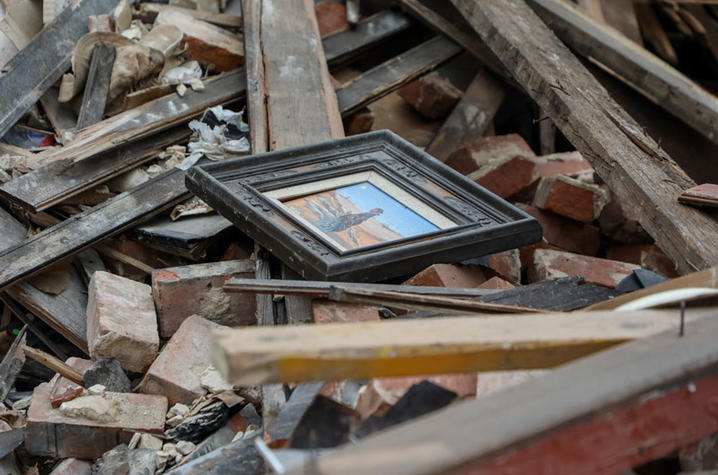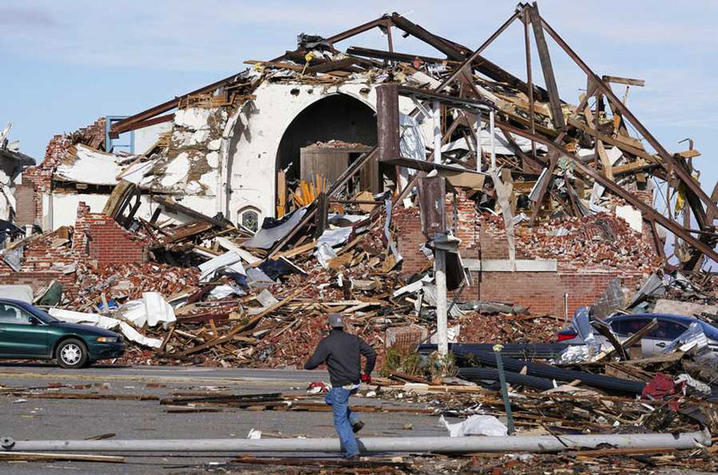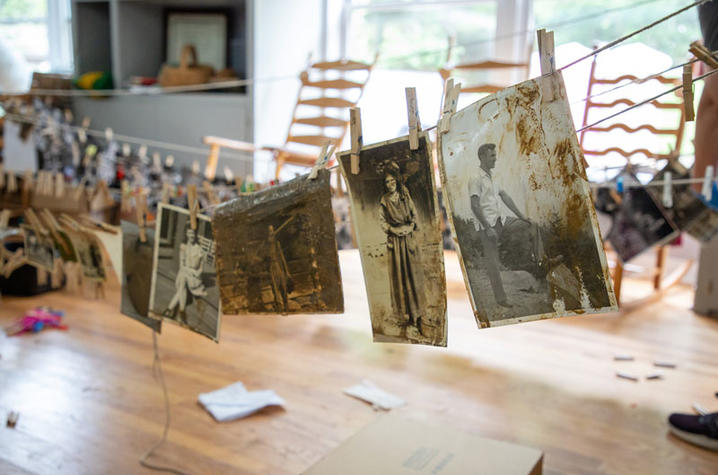Filling a need: UK Arts Administration hosts first ever arts emergency management conference
LEXINGTON, Ky. (Aug. 7, 2024) — In December 2021 unseasonal tornadoes ravaged parts of Western Kentucky, cutting a path more than 165 miles long, injuring more than 500 people and causing the death of 57. Seven months later a historic flood devastated much of Eastern Kentucky. Forty-five people died, nearly 9,000 homes were destroyed and hundreds of families were displaced.
Studies done in the months that followed those severe weather events revealed a vulnerability in the arts and cultural sector to potential disasters and other emergencies. In response to those findings, the University of Kentucky’s Department of Arts Administration is convening Kentucky's inaugural Arts Disaster & Crisis Preparedness Conference, Sept. 6 on UK’s campus.
“The Department of Arts Administration is the first academic department in the nation to offer emergency and crisis management education that is specific to the arts,” said Rachel Shane, Ph.D., chair of the department. “As an extension of its offerings in this area, this conference will serve as the first conference of its kind in the nation, bringing together arts and emergency management experts and scholars to build a more resilient and prepared arts sector.”
The conference will facilitate the exchange of best practices in emergency preparedness within the arts and culture sector and the broader community. The day is designed to equip attendees with practical tools, resources and knowledge to implement emergency planning strategies for their organizations and workspaces.
In a crisis, the arts can be a refuge, and that example was evident at Hindman Settlement School in Knott County. The nonprofit arts and culture organization addresses critical issues surrounding literacy, food insecurity and access to traditional arts. In the aftermath of the summer 2022 floods, Hindman Settlement School became a shelter and provided meals to the residents of that hard-hit community. Leah Hamilton, an assistant professor in arts administration who specializes in arts emergency management and cultural policy, says that’s not an uncommon occurrence during disasters in small communities.
“People look to the arts for healing and comfort during crises. Yet, the increase in, and severity of, natural and human-made disasters in the U.S. have put these creative spaces and artists at risk,” Hamilton said. “Managers of arts centers, theaters, museums and individual artists with studios can face a sudden loss of income and significant damage to equipment and materials in the face of disasters. There is even the risk of loss of life and injury to staff, volunteers and audiences.”
Among those whose lives were disrupted by the respective disasters were artists and the leaders and volunteers of nonprofit arts organizations. These individuals were faced with rebuilding their studios, galleries and other facilities or, worse, deciding to shutter them permanently. In addition to impacting people in Kentucky’s creative community, the disasters also threatened collections meaningful to Kentucky’s artistic heritage. At the Museum of the Mountain Dulcimer in Hindman, Kentucky, among the instruments swept away by flood waters was a dulcimer played by legendary Appalachian folk musician Jean Ritchie. An untitled painting by the late Western Kentucky internationally renowned artist Helen LaFrance was damaged in the tornado, but a local artist, Paul Aho, dean of the Paducah School of Art and Design, was able to restore it.
Preparedness in meeting these disruptions begins with people responsible for the integrity of a community’s arts and cultural assets, and local officials charged with launching recovery efforts quickly after a disaster. Shane says the conference is ideal for people working in both sectors — members of the creative industry and emergency management professionals.
“We want these two sectors to come together, collaborate, and share ideas as they so rarely connect until a disaster strikes,” she said. “For those working in arts and culture, the conference is great for those who manage artistic spaces and collections, teach or conduct research in the arts, or for practicing artists with their own creative workspace. For emergency management, the conference is ideal for those with experience or interest in working with arts and culture venues and creative workers in emergency and disaster response.”
The Arts Disaster & Crisis Preparedness Conference will facilitate the exchange of best practices in emergency preparedness within the arts and culture sector and the broader community. The day is designed to equip attendees with practical tools, resources, and knowledge to implement emergency planning strategies for their organizations and workspaces. The conference will also serve as the official launch of the Kentucky Heritage Emergency Response Network (KHERN).
The conference will feature presenters from leading national agencies in disaster management and arts administration, including FEMA, the National Weather Service, the National Endowment for the Arts, the American Institute for Conservation, and the National Coalition for Arts Preparedness and Response. It will present scholarly research from national and international experts and disaster planning workshops specific to managing arts and cultural spaces.
Additionally, the Arts Disaster & Crisis Preparedness Conference will serve as the official launch of two new initiatives in the state of Kentucky: the Kentucky Heritage Emergency Response Network (KHERN), which was formed after recent disaster events in the state to help support arts and cultural organizations and creative workers before and in times of disaster; and the launch of the Department's new undergraduate and graduate certificates in Arts Emergency Management.
For more information, including a schedule, list of speakers and registration instructions, visit the Arts Disaster & Crisis Preparedness home page.
As the state’s flagship, land-grant institution, the University of Kentucky exists to advance the Commonwealth. We do that by preparing the next generation of leaders — placing students at the heart of everything we do — and transforming the lives of Kentuckians through education, research and creative work, service and health care. We pride ourselves on being a catalyst for breakthroughs and a force for healing, a place where ingenuity unfolds. It's all made possible by our people — visionaries, disruptors and pioneers — who make up 200 academic programs, a $476.5 million research and development enterprise and a world-class medical center, all on one campus.







